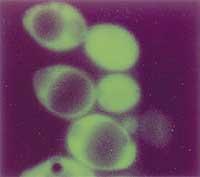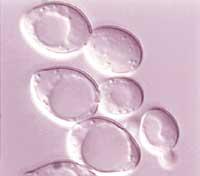Salt and genes
Mineral salts are an essential raw material for living beings. Common salt, for example, contains chloride and sodium ions that cells use to establish and maintain an electrochemical balance with the environment.
In animal cells, for example, to achieve sodium balance, the external sodium concentration should be approximately ten times higher than in intracellular cells. This difference in concentration makes cells acquire food from the medium. Therefore, the balance of sodium is fundamental in animal life.
These concentrations of salts so important to animals, on the other hand, are harmful to most plants. In fact, the ionic balances of animal and plant cells are different and sodium is a more toxic ion for plants than for animals.


However, in nature there are plants that adapt well to salt, such as the coast, marshes, etc. Residents. These plants have the ability to live in salty lands, which means that their cells have a specific ability to combat the toxicity of sodium ion.
Genes - Genes Genes
The ability to adapt plants to saline means is due to the regulatory genes of the ionic equilibrium. These genes, in general, are little known, so their identification and characterization can be of great use, for example, for obtaining plant species more tolerant to salt.
However, in the works with plants in the laboratories, the long duration of the crop cycle of the plants limits the development of the research. In addition, it is difficult to identify plant genes, since their genome is complex and large. However, many plant genes also appear in simpler, simpler living beings. For this reason, in general, the identification and characterization of plant genes is allowed, first by the study of the genes of these simple living beings, although later they must be contrasted in the plants.
In the past decade, scientists took as an example the yeast Saccharomyces cerevisiae to study genes that increase salt tolerance. This microorganism uses the same mechanism as plants to maintain the ionic balance.
Since then, in the Biochemistry laboratory of the UPV/EHU in San Sebastian, we have been working on identifying the genes that help this yeast to adapt to the saline media. For this purpose, first of all, they use molecular biology techniques to isolate and identify genes. The following is analyzed the response of these genes to different concentrations of salts and their interaction with other genes is studied.
Knowing how these genes mitigate the toxicity of sodium in yeasts, they try to get the same in the plants that feed. In these applications it has been worked with external research teams and the results obtained have been very interesting, due to the improvement of salt tolerance in two plant species.
- Title of projectTranscription factors that limit halotolesis.
- Objective To know the molecular basis of salt tolerance.
- Principal Investigator Iñigo Fernández de Larrinoa.
- Working Group I. Mendizabal, M. Santos, I. Saldaña.
- Applied Chemistry Division (Laboratory of Biochemistry and Molecular Biology).
- incl.
- • • • • • • • • •
Buletina
Bidali zure helbide elektronikoa eta jaso asteroko buletina zure sarrera-ontzian











